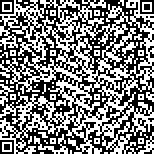杨玺,刘进,徐亮,等.经颅直流电刺激背外侧前额叶对脑卒中后失语症患者命名和音位流畅性的影响[J].中华物理医学与康复杂志,2022,44(11):973-977
扫码阅读全文

|
| 经颅直流电刺激背外侧前额叶对脑卒中后失语症患者命名和音位流畅性的影响 |
|
| |
| DOI:10.3760/cma.j.issn.0254-1424.2022.11.003 |
| 中文关键词: 经颅直流电 背外侧前额叶 失语症 音位流畅性 |
| 英文关键词: Aphasia Transcranial electrical stimulation Dorsolateral prefrontal cortex Phonemic fluency |
| 基金项目:科技部国家重点研发计划项目(2022YFC2009700);国家自然科学基金(82102681);江苏省自然科学基金(BK20210228) |
|
| 摘要点击次数: 3982 |
| 全文下载次数: 4519 |
| 中文摘要: |
| 目的 观察经颅直流电刺激(tDCS) 脑卒中后失语症患者左侧背外侧前额叶(DLPFC)对其图片命名速度、图片命名正确率和音位流畅性的影响。 方法 采用随机数字表法将脑卒中后失语症患者24例分为观察组和对照组,每组患者12例。2组患者均进行语言训练和图片命名训练,观察组在图片命名训练的同时给予左侧背外侧前额叶tDCS治疗,每日1次,每次20 min,每周治疗6 d,连续治疗2周。对照组患者仅给予假tDCS治疗。于治疗前、治疗2周后分别对患者进行图片命名速度和正确率,以及音位流畅性测试。 结果 治疗2周后,2组患者高频词的准确数和反应时间与组内治疗前比较,差异均有统计学意义(P<0.05),且观察组治疗2周后高频词的反应时间显著少于对照组治疗2周后,差异有统计学意义(P<0.05)。治疗2周后,观察组低频词的反应时间与组内治疗前比较,差异有统计学意义(P<0.05)。治疗2周后,观察组的音位流畅性为[7.50(4.50,8.75)]个,显著优于组内治疗前和对照组治疗2周后,差异均有统计学意义(P<0.05)。 结论 对脑卒中后失语症患者的左侧背外侧前额叶进行tDCS,可以促进其大脑网络词汇检索的处理,加强患者的执行控制功能。 |
| 英文摘要: |
| Objective To observe any effect of transcranial direct current stimulation (tDCS) on the speed and accuracy of picture naming and on the phonological fluency of aphasic stroke survivors. Methods Twenty-four stroke survivors with aphasia were randomly divided into an observation group and a control group, each of 12. In addition to language training and picture naming training, the observation group received 20 minutes of tDCS over the left dorsolateral prefrontal cortex (DLPFC) daily, 5 days a week for 2 weeks. The control group was given sham stimulation. Before and after the 2 weeks of treatment, both groups were tested for picture naming and phonological fluency. Results Significant improvement in the number of accurately pronounced high-frequency words and in reaction time was observed in both groups, but the observation group′s average reaction time for high-frequency words was significantly shorter than the control group′s average. The observation group′s average reaction time for low-frequency words had also improved significantly. After the 2 weeks of treatment, the phonological fluency of the observation group was significantly better than before the treatment and better than that of the control group. Conclusions tDCS applied over the left DLPFC of stroke survivors with aphasia can promote lexical retrieval and strengthen their executive and control functioning. |
|
查看全文
查看/发表评论 下载PDF阅读器 |
| 关闭 |